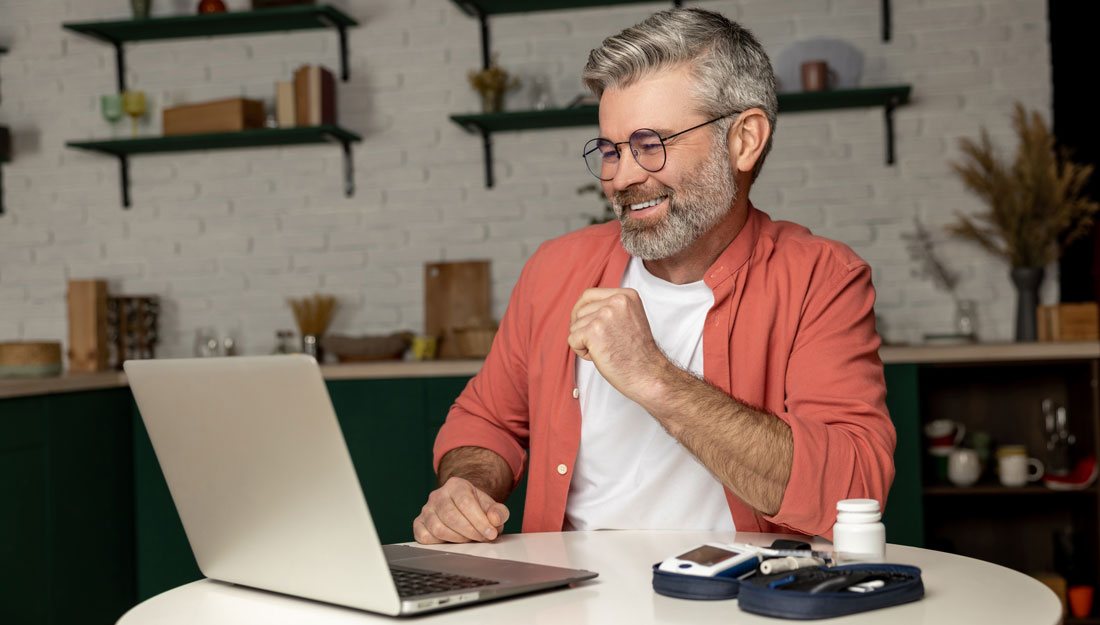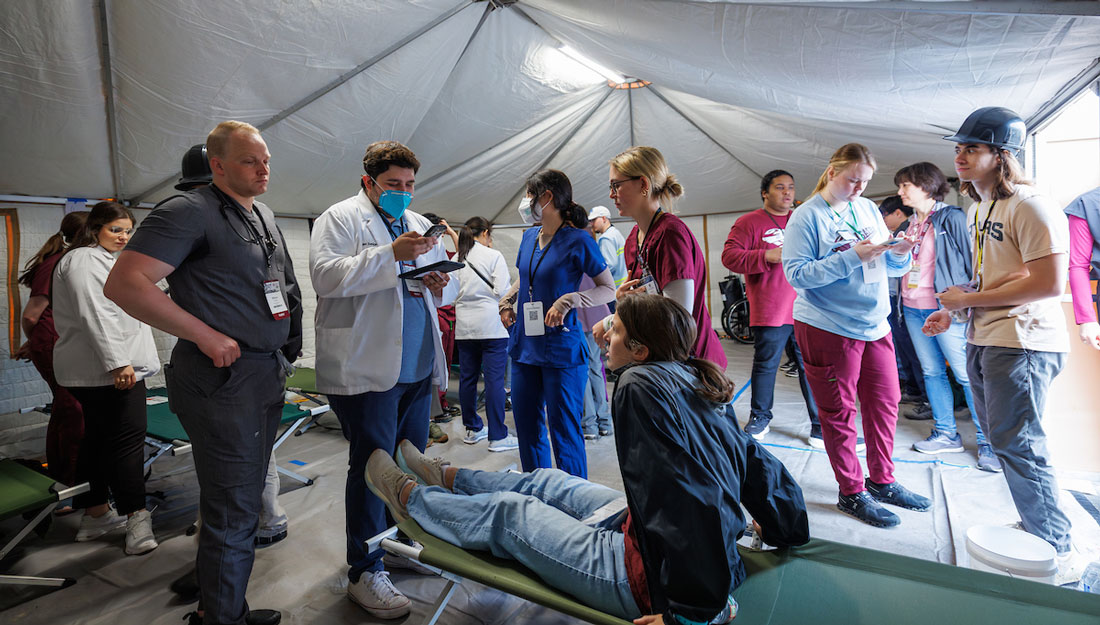Diabetes kiosks educate about disease, proper management
Diabetes affects nearly all of us directly or indirectly, but the Texas A&M Health Science Center (TAMHSC) School of Rural Public Health is leading a novel approach to educating people about the devastating disease and how to manage it.
The touch-screen diabetes education kiosk (Diosk©) was initially developed by Jane Bolin, Ph.D., J.D., RN, associate professor, and Regents and Distinguished Professor Marcia Ory, Ph.D., M.P.H. Since their development in 2007, the kiosks have been tested, refined and evaluated across the Brazos Valley and Corpus Christi, with possible implementation statewide in the months ahead.

According to the American Diabetes Association, 8.3 percent of the U.S. population – 25.8 million children and adults – have diabetes. Unfortunately, while an estimated 18.8 million have been diagnosed, another 7 million have not.
The risk for developing Type 2 diabetes increases if you are overweight or obese, do not participate in regular physical activity, have a family history of the disease, or are Hispanic, African-American, Asian or Native American. In South Texas, an estimated 81 percent of the population is Hispanic with rates of diabetes as high as 25 percent, among the highest in Texas.
That’s where the Diosk comes in.
“We have made chronic disease, in particular diabetes, a priority since the early years of our school,” Dr. Bolin said. “The diabetes kiosk is important because many health care providers, particularly in rural areas of our state, do not have adequate time, staff or funds to teach their patients about diabetes, how to live with it and how to better manage the disease. This Diosk is a cost-effective way to provide this important information.”
Drs. Bolin and Ory and their team – along with outside specialists who include an endocrinologist, Melissa Wilson, M.D., of Corpus Christi – have refined the curriculum of diabetes self-education into an interactive multimedia computer program available in both English and Spanish. Users access content such as healthy recipes, medication management and exercise.
Upon approaching the Diosk, the user selects the language and chooses from a variety of topics from the main menu. Topics (or modules) include information on “What is Diabetes?,” “Am I At Risk?,” “Signs and Symptoms” – even recipes, exercise and a “Kid’s Corner.” The information in the modules teaches people the importance of measuring their blood sugar, inspecting their feet for signs of poor circulation, making healthy food choices and more.

Dr. Bolin and her team programmed the Diosk to be able to retrieve data that showed how many clients made repeat visits, how many set goals, and the most popular or most viewed educational components. Patient names were removed from these reports to protect patient confidentiality.
During the pilot study, the Diosks were in several Brazos Valley facilities, including the community health centers in Madison, Grimes and Burleson counties, and the Family Practice Residency and Brazos Valley Community Health Center in Bryan. Quick guides were developed to help organizations learn how to set up and utilize the Diosk.
The Corpus Christi project included collaborations with the Morris L. Lichtenstein Jr. Medical Research Foundation of Corpus Christi, H-E-B and several community clinics. Five kiosks were placed at the CHRISTUS Spohn Memorial Clinic Pharmacy, CHRISTUS Spohn Westside Clinic, Antonio E. Garza Arts & Education Center, H-E-B pharmacy and Amistad Clinic – primarily sites serving low-income/low-education populations in the region.
During the 11-month Corpus Christi study period, the Diosks were accessed more than 5,000 times, or nearly 10 times a day. The average time spent per session was seven minutes, with almost 25 views per use. There were 733 repeat uses and 6,900 printouts made.
The study illustrated who was most likely to use the Diosk. A majority of users are women (64 percent), ages 36-49 (40 percent), Hispanic/Latino (67 percent) and diagnosed with diabetes by a doctor (45 percent). Even those who had never used a computer were able to use the Diosk, and a tremendous 85 percent planned to make a behavior change after using it.

Overall, the Diosk has proven successful in increasing the exposure to diabetes self-management education in low-income and low-literacy populations with risk for high complications. In addition, community organizations catering to low-income populations are able and willing to serve as delivery sites.
Future strategies include transfer of technology support to other locations, promotion of a web-based version and creation of a closed-circuit television version, and potential development of a low-literacy kiosk for other chronic conditions.
“These Diosks are serving as a model, and many other pharmacies and community health centers are eagerly awaiting a final product so they may use them on a broad scale,” Dr. Bolin said. “We are excited about the opportunity to make information on diabetes self-management free and easily accessible to Texans through the diabetes Diosk.”
Project support has been provided by the TAMHSC-School of Rural Public Health Center for Community Health Development, a member of the Prevention Research Centers Program supported by the U.S. Centers for Disease Control and Prevention, and more recently from the Morris L. Lichtenstein Jr. Medical Research Foundation. The scientific journal Diabetes Educator also will publish a report about the Diosk in an upcoming issue.
Media contact: media@tamu.edu


